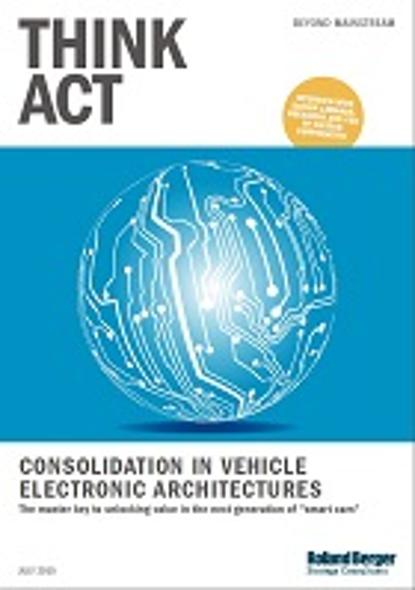Consolidation in vehicle electronic architectures
![{[downloads[language].preview]}](https://www.rolandberger.com/publications/publication_image/rb_2180798_download_preview.jpg)
The master key to unlocking value in the next generation of "smart cars"


Consumers expect the latest and greatest in electronics and safety when they go to buy a car. Whether it's an instrument cluster with a graphics rich, fully reconfigurable display or a lane departure warning system, a tremendous amount of processing power and electronic communication is required to operate today's vehicles.Today's approach to adding these features to vehicle's electric/electronic (E/E) architectures is "ad-hoc," simply adding a new ECU every time a new vehicle feature requires processing power. While this solution has worked for a time, the industry is now at a tipping point, with this approach becoming too expensive and adding too much complexity to be sustainable.
In this study Roland Berger Strategy Consultants explores a solution to this increasing complexity, known as module consolidation."All major automotive trends today, from improved cockpit electronics to new ADAS features, are largely enabled by advanced electronics systems," says Thomas Wendt, a Senior Partner in Roland Berger's North American Automotive practice. "OEMs will not be able to keep up with consumer's expectations, both in terms of quality and price, if they continue to add ECUs every time they want to add a new feature," explains Wendt. "A 'blank sheet' approach to electronic architecture design is needed."
![{[downloads[language].preview]}](https://www.rolandberger.com/publications/publication_image/rb_2180798_download_preview.jpg)
The master key to unlocking value in the next generation of "smart cars"
